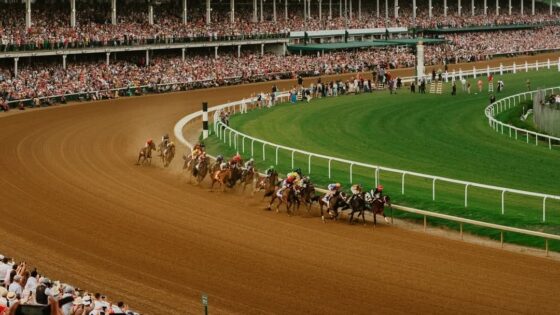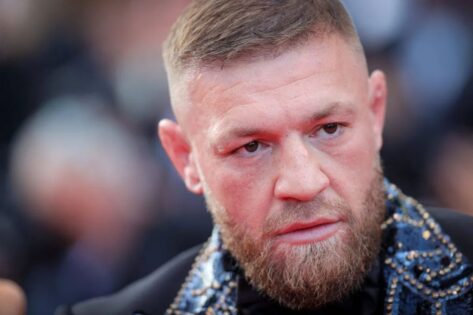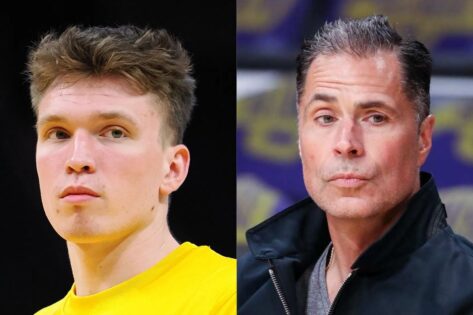“You want to see the greatest, and the greatest of all races is the Kentucky Derby.” These words from the late John Sosby would be seconded by almost anyone who knows about thoroughbred racing. But what makes the Kentucky Derby so special? Is it because a horse gets only 1 chance at the Derby ever in his lifetime? Is it the $5 million prize money pool from which the winner gets to walk away with $3.1 million that makes the Run to the Roses even more competitive and fierce?
Or maybe it is the American dream that the race symbolizes that makes the Kentucky Derby so precious. Being part of the Triple Crown races, every horse racing fan eagerly awaits the first Saturday of May. After all, this is when the Kentucky Derby is always held as a time-honored practice. And this time too, on May 3, 2025, you will get to see some of the best horses in the nation line up to make the ‘fastest two minutes in sports’ happen. But before it all goes down, let’s get to know about the racecourse and the track on which America’s greatest race takes place.
What is the length of the Kentucky Derby race?
The length of the race is 1 and ¼ miles, or 10 furlongs, which is run on the famed 1-mile Churchill Downs oval racecourse. The starting gates are near the grandstand area, and the 2200-yard race ends in front of the clubhouse stands. It is just a 1-lap race of 1¼ miles long, and it lasts about 2 minutes.
Only 2 minutes, you are probably wondering. But think of it this way. So much is at stake in just 2 minutes. So much money on the line. That’s what makes this race so special. Last year, Mystik Dan became the Kentucky Derby Champion, running home the 1¼ miles in 2:03.34 seconds. However, do you know the Kentucky Derby was not always a 10-furlong race?
In 1875, the Derby started as a 1½-mile-long race (12 furlongs). And it continued like that until 1896, when the race was shortened into the present rendition. When compared to the Triple Crown races, the Kentucky Derby is not the longest, but also not the shortest. The Belmont Stakes, which is held in June, is 1½ miles long, while the Preakness Stakes, held in mid-May, is the shortest of the three (1 and a 3/16 mile).
Now you know the race length of the Derby, but what about the track surface? Oh, that’s where things get interesting.
What is the track surface on which the Kentucky Derby is run?
This is the 151st edition of the Kentucky Derby. The same racecourse, the same length, and historically, also the same track surface. This race always takes place on a dirt track as a tradition. But that’s what makes it intriguing. Because, depending on the weather, the Churchill Downs dirt track becomes a different surface to run on.
If the weather is dry with a scorching sun, expect a hard, dry track. And the race times in such cases are a little longer. With a little rain, this same dirt track becomes a wet, fast track surface. The racers will encounter standing water on the surface, but the rain hasn’t yet soaked the base. It is not the most preferred variety of track for either the jockey or the horses, because the standing water can result in kickback. And these thoroughbreds don’t really like that.
But it’s still better than the muddy and sloppy surfaces, which are a result of prolonged rain and the water soaking the base completely. As a result, the surface becomes spongy, and the hooves push deeper into the ground. The kickback of the standing water and mud is even more irritating in this case for the horses. There are even kickbacks fogging up the goggles of the jockeys. As a whole, the race becomes a challenging affair.
Naturally, one direct impact of such a surface is that it gives a slower race. In 2018, when Churchill Downs encountered 2.85” of rain between 1 and 7 pm (post time was 6:46 pm), it saw the winner, Justify, run home the Derby in 2:04.20 seconds, the slowest time in the last 13 Derby editions. And it’s not just about speed. Even physically, the sloppy track is not healthy for the thoroughbreds.
Equine therapist Dianne Volz shared with Courier Journal how the sloppy track affects the horses: “A deeper track will pull on soft tissue, so their stifle, which is like our knee, can get pain, and it can radiate into the low back.” So, the most preferred surface is the ‘Good’ track, which is the track that dries out for a while after rainfall. Its texture is almost similar to a fast track, but with a little bit of softness and moisture, the contact of the hooves is much more comfortable.
Some other terms that are used to describe the dirt track surface at Churchill Downs are ‘heavy,’ ‘slow,’ and ‘frozen’—although these terms are rarely used these days. Majorly, it fluctuates between a good track, a wet fast track, and a sloppy track.
We will have to see what the participants encounter this time around. There is a forecast of rain during the Kentucky Derby week, making it an interesting buildup to the big race for the trainers, the jockeys, and the ones planning to attend the race.
The post How Long Is Kentucky Derby Track? Get to Know Miles and Laps That Horses Race for $5 Million appeared first on EssentiallySports.



